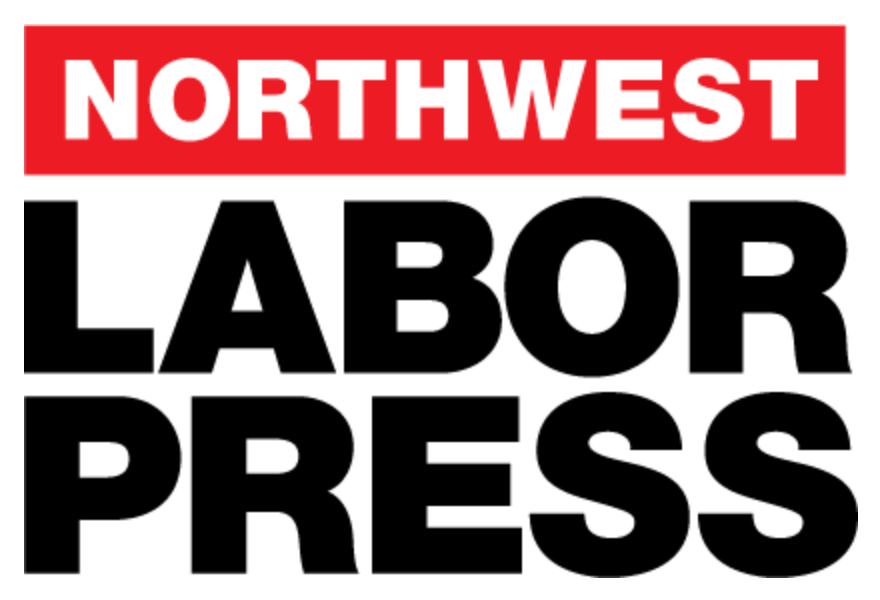After four years out of power, Donald Trump returned to the White House Jan. 21 ready to implement an agenda. But instead of asking the Republican Congress to enact it through law, he’s issuing a multitude of executive orders and federal management directives.
So far, most of the Trump White House actions have focused on immigration, trade, a radical purge of the federal workforce, and uprooting and reversing Biden administration policies on race and gender identity.
But many of the executive orders push up to and past the limit of the powers the Constitution grants to a president. In response, labor organizations and other organizations have filed more than 40 federal lawsuits, and judges have slowed or halted some of the administration’s initiatives.
Federal workers face multi-part assault
From the first day of the new administration, federal employees and their unions have found themselves in the fight of their lives.
It began hours after Trump was sworn into office, when he issued an executive order asserting the administration’s right to reclassify as many as 50,000 federal employees as at-will, removing civil service due process protections. Trump tried to impose a similar policy in his first term, known as “Schedule F,” but it was blocked by a court challenge that was still pending when Joe Biden took office and reversed it.
Another Jan. 20 executive order directed department heads to terminate remote work arrangements and require employees to return to work in person. Congress explicitly authorized federal agencies to use telework by law in 2010, and an estimated 10% of the civilian workforce works fully remote.
But the most far-reaching Day 1 executive order was the one announcing a federal hiring freeze, which included the cancellation of already made and accepted job offers. As long as the hiring freeze remains in effect, the federal workforce will shrink by attrition. Some agencies in particular — those that rely on seasonal workers — could be in crisis soon.
U.S. Senators Jeff Merkley (D-Ore.) and Patty Murray (D-Wash.) joined a dozen other Senators urging an end to the hiring freeze at the U.S. Parks Service.
“Without seasonal staff during this peak season, visitor centers may close, bathrooms will be filthy, campgrounds may close, guided tours will be cut back or altogether cancelled, emergency response times will drop, and visitor services like safety advice, trail recommendations, and interpretation will be unavailable,” the Senators wrote to Trump’s interior secretary.
Resign while you can
Then on Jan. 28, an email went out to over 2 million federal employees with the subject line “fork in the road,” offering them the option of resigning and collecting a salary until September 30. That’s a promise the president had no authority to keep, for starters because a dysfunctional Congress had funded the federal government only through mid-March.
Rob Arnold, national business representative for the Northwest region of the National Federation of Federal Employees (NFFE), told the Labor Press that his union, like others, advised workers not to accept the offer based on its dubious legality.
“It hasn’t been authorized by Congress. And there’s case law suggesting that 10 days is the maximum amount of administrative leave that you can grant to a federal employee.”
Several unions filed suit to block the plan from going forward. A judge issued a temporary restraining order, but later allowed it to go forward.
In the end an estimated 65,000 federal employees accepted the offer. But given the size of the federal workforce, it’s not clear how many of those workers would have left regardless. About 2.5% of the total federal workforce took the offer, but 6% of federal workers resign or retire in a typical year.
Mass firings of probationary federal employees
Next, in mid-February, directives went out announcing that probationary employees across multiple agencies — those with less than a year on the job — would be immediately fired without cause. The terminations began immediately and could end up being massive. American Federation of Government Employees (AFGE) estimates that at any given time there are about 220,000 federal workers who have less than a year on the job.
Early cuts included about 3,400 at the U.S. Forest Service and 2,000 at the Energy Department.
Mass firings even took place at the chronically understaffed Department of Veterans Affairs, where over 1,000 probationary employees were dismissed Feb. 13.
Federal agencies spend significant time and resources recruiting and hiring new employees to fill vacancies as others leave and retire.
“This administration has abused the probationary period to conduct a politically driven mass firing spree,” said American Federation of Government Employees President Everett Kelley in a press statement. “These firings are not about poor performance. There is no evidence these employees were anything but dedicated public servants.”
Wildfire danger ahead
Rachel Granberg, a wildland fire fighter and NFFE union steward, said the Interior Department and Forest Service were already understaffed for wildland fire response. It’s hard to recruit because it’s a difficult and stressful job that’s also poorly paid. Granberg said wildland fire fighters were offered the deferred resignation just days after returning from fighting fires in Los Angeles. The hiring freeze, if not lifted, could worsen the worker shortage and devastate fire suppression response.
Coos Bay wildland firefighter Sean Wiedemann is feeling that sense of alarm. Wiedemann, an NFFE member and 15-year federal employee, serves as chief steward for close to 100 employees at the Coos Bay office of the Bureau of Land Management.

“We lost quite a few people during the hiring freeze,” Wiedemann said, “because we had a ton of people who made it all the way through, and they had an offer, and they had a start date, and then as soon as January 20 rolled around, they hit that hiring freeze.”
Wiedemann’s wife was one of them. She was returning to federal service after two and a half years of caring for their newborn, and had a start day of Feb. 9 until her job offer was rescinded.
Then on Feb. 18, eight of Weidemann’s Coos Bay coworkers who were probationary employees learned they were being summarily terminated without cause. That included four field foresters who prepare federal timber sales. Also terminated were an invasive weed specialist, a hydrologist, a wildlife biologist, and a realty specialist who handles complex negotiations over reciprocal public-private forestland rights of way.
“Our management has had a really good relationship with our union, and they worked very hard to hire all these people in the last year. I feel like we got an extremely good group of folks. They’re all extremely motivated. They were working super hard. They were really some of the best folks that I’ve worked with in natural resources.”




Interesting fact: Tesla cars have the highest rate of fatal accidents as reported by Road and Track magazine. https://www.roadandtrack.com/news/a62919131/tesla-has-highest-fatal-accident-rate-of-all-auto-brands-study/
Fire Elon